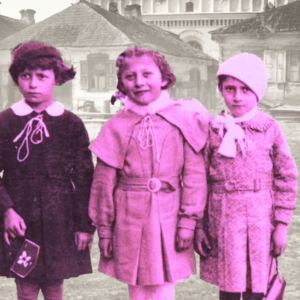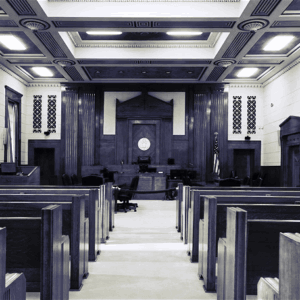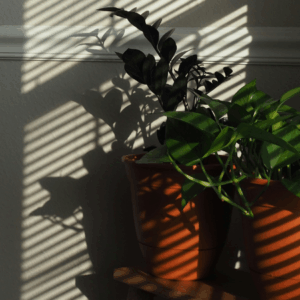
Friday Night Flames: How Wildfires Threatened One High School’s Football Season
Madeleine Orr Considers the Impact of Climate Change on Athletics
Coach Rick Prinz woke up on November 8, 2018 and headed to his job at the local high school like any other day. He tore through an early-morning workout, then headed to Starbucks for his morning coffee with a colleague. The local news was reporting smoke in the area, and a fire in the Sierra Nevada, not far off. But that seemed normal to the coach, who had lived through countless fires in northern California. With a playoff game looming the next day, he texted his 60-player varsity roster on the football team to confirm the day’s practice would go ahead.
Don’t even think about missing practice today.
We’re practicing at three o’clock. Regardless of the smoke. Be there. No excuses.
From the time Prinz entered the Starbucks to the time he came out, the smoke and the flames had come within sight. Slightly more unnerved, but not yet concerned, he hopped in his truck and headed back to the school. “Ya, there was smoke, but we always have smoke,” he recalled. “We’re dealing with smoke all the time. So I didn’t think much of it.”
Around 8am, as the students were arriving for class, news started spreading that an elementary school on the other side of town had caught fire. The Principal gathered the teachers in the drama room to make the call: Paradise High School would shut and everyone would be told to evacuate.
When a town is grieving, and they attach their happiness to football games, there’s significant pressure to perform.
Prinz spent the next 45 minutes helping students leave, catching those arriving and redirecting them to the nearest vehicle on its way out of town. Students were told to call their parents, but not to go home. Parents arrived at the school frantic, looking for their kids, only to find out they’d been put in a car with another family or an older student to leave town. All traffic needed to be leaving the city, not clogging up the roads by driving in different directions.
The skies darkened as the smoke settled in. Prinz recalls, “The wind was blowing over 100 miles an hour, carrying embers the size of my hand.” At one point, the firefighters recorded that the fire was spreading at a speed of a football field (100 yards) per second, “and it was dark as midnight out there”. When he was confident the students were all out, he went home.
After rushing his family out of the house and sending them off, Prinz looked around and tried to pack. Wildfire evacuees are typically told to pack for two to three days: a couple of changes of clothes, some toiletries, the essentials. This guidance is offered because it makes the decisions easier, eliminating the stress associated with packing up a whole life’s worth of material goods in a matter of minutes. So Rick did just that. He grabbed some extra clothes, a toothbrush, and a few items for his wife who was at work in a neighboring town and unable to return home. He didn’t take their computers, important documents, or valuables. He didn’t think that would be necessary. But as propane tanks began exploding on his street, he realized there was no time to think about it—he had to leave.
*
Prinz wouldn’t be able to return to his home for several months, and while the structure was spared, smoke had damaged every item inside. In the interim, he and his family moved in with friends in a neighboring town, then into a small place of their own, while the notion of going “back to normal” felt more remote by the day.
For the rest of the school year, from December through June, nothing was the same. Classes resumed just before the Christmas holiday, delivered online, with the teachers based out of the Chico mall. Teachers and students were exhausted, so only the basic curriculum was supplied, no extra-curriculars. Football was temporarily disbanded. After the holidays, school operations moved into a warehouse at Chico airport, and students showed up for in-person classes.
Only 13 football players showed; the rest had been too traumatized to attend school or were displaced all over California as their families sought out new and more stable places to live. Those who attended school were keen to play again, but many were in temporary housing. With the spring training season on the horizon, and knowing the players needed something to look forward to, Prinz lied to his team: “Hey guys, we’re going to have a season next fall, no matter what.” He knew it was a long shot.
They had 13 players, and their status in the conference (league division) was compromised because the school had lost so many students since the fire. But with Paradise’s strong record from the previous season, other coaches and athletic directors at A-level schools didn’t like the notion of playing them. For these schools, a game against Paradise was a lose-lose prospect: if you beat the team that’s recovering from a fire, you’re kicking them while they’re down, but if they’re as good as they used to be, your team would be easily beaten. Eventually, Paradise High’s athletic director Anne Stearns chased down eight schools that agreed to play.
Practices were initially held on a gravel driveway just outside the warehouse-turned-school, and later moved to the field at Marsh Junior Middle School. Gear was borrowed from other schools. The players trained in the same shirts and shorts every day, having lost everything in the fire and cobbling together whatever they could from second-hand stores and friendly neighbors. There was a lot of mud at Marsh Junior, but from the field, the players could look up to the ridge where Paradise sat and imagine themselves playing at home in the fall.
Between March and August, the team came together. They started with 13 players but fielded 45 by the summer, and nearly had a full roster by the first game. Every eligible player had returned, except one who moved to New York with his family. The rest were making it work: staying on friends’ couches, in trailers, living out of their cars, working multiple jobs to support themselves so they could stay close by and play football, while their families rebuilt their lives all across the state.
It’s hard to explain how important Paradise football is to the people of that town. It’s central to the culture, as most men either grew up in the program or watched from the sidelines. Traditions associated with the program are passed from father to son. It’s respected as a rite of passage, and in a town where there isn’t much to do, football is recognized as a means of keeping boys out of trouble. So, when it was announced that Paradise football would return in the fall, the town showed up in a big way to support them.
Old players rearranged their schedules to join the coaching staff on a volunteer basis. Parents of players living in town or nearby agreed to house those whose families had moved away. Local restaurants offered lunches to the players, which Prinz learned was the only reliable meal some of them received each day. Prinz and his coaching staff rallied to drive players back and forth to their new homes in neighboring towns, and became de facto counselors to these kids who were grieving their former stability and lifestyle.
The flip-side of support is pressure. As the season opener approached, the town staked its hopes on this young fragile team. The energy was positive but overwhelming for some players. When a town is grieving, and they attach their happiness to football games, there’s significant pressure to perform. Of course, Paradise would have been proud of these boys regardless of the outcome on the field, but try explaining that to a group of teenagers. And so there were injuries and anxieties that went unattended.
Prinz recalls some students hiding stress fractures and sprains from coaches, while stress and over-exhaustion were ignored. An assistant coach showed up every day despite severe medical issues, exemplifying commitment but inadvertently showing the impressionable team that medical issues and healing are not as important as football. Everybody involved in the team needed the outlet of sport to manage the internal chaos stirred up by the fire, but there was a dark side to that myopic focus: some athletes suffered mentally and physically to compete in that season.
To say the team performed well would be an understatement. They went undefeated in their season, clinching a playoff berth despite having no clear spot in any conference. When I met with Prinz in his office, off the side of the men’s locker room at Paradise High in the spring of 2022, he recalled the 12-month period from November 2018 to November 2019 with mixed emotions. “It was worth it,” he told me, “but the stuff going on off the field was rough. Really, really rough. Very difficult. A lot of extra time went into it, so I was tired all the time.” The boys who were freshmen in 2018 were graduating in 2022, and Prinz was also hanging up his whistle and retiring from coaching. Between the 2018 fire, which impacted the whole of 2019, and the COVID pandemic, which impacted everything from 2020 through 2022, the last few years of his coaching career threw him every possible curveball, and it was time to rest.
*
While remarkable, the story of Paradise High football is not uncommon in the western states, where wildfires have rampaged through several communities in recent years. The Paradise case was extreme, as the Camp Fire razed the whole town, but similar stories have popped up out of Redding and Big Creek in California, and Malden in Washington State. There are lessons to be gleaned at every turn in the Paradise story. So let’s go back to the start.
On the morning of the Camp Fire, Prinz didn’t think much of the smoke or the warnings on the news. He’d lived with these warnings through the summer and fall seasons for most of his life; fires were sparked on a regular basis. When you’re used to these warnings, they become easy to ignore.
I spent the summer of 2021 in Kelowna, British Columbia, right in the heart of fire country in Canada. From May through mid-August, it didn’t rain, so by mid-June the air started to smell faintly of smoke. And then the smell got stronger. Wildfire season isn’t meant to start until July, but in 2021 any sense of “usual” went out the window. By July, on the bad days, you couldn’t leave the house without smelling like a campfire. On the radio, we’d hear of towns being evacuated because of the fires. One town, Lytton, just a couple of hours away by car, was burned to the ground in a matter of minutes.
We watched from our morning walks and afternoon bike rides as helicopters and small planes flew over the lake in the centre of town, picking up water to drop over the flames. On our days off, we’d spend our mornings at the beach and leave by lunch because it would get so smoky that you could barely see the edge of the water. At various points throughout the summer, you could see flames or billows of smoke rising off the ridges of the nearby mountains. At night, the flames glowed.
This is what it’s like to hear the warnings and see the signs of fire every day, and to learn to live with it, because what else can you do?
As someone working in the climate space, the fires were deeply unsettling to me. I understood that it shouldn’t be this bad and that something was off. The firefighters were over-capacity, triaging the fires as they arose because they had already deployed every truck, plane, and person to the frontline. By midsummer, there were no resources left. So smaller fires were inspected but ultimately left to burn out on their own. In some cases, this meant they got bigger than they should have, but so long as they weren’t threatening humans, they couldn’t be made a priority. Reinforcements were called in from the US, but their fire resources were similarly over-extended. So the Canadian governments sought help from overseas teams. This helped, but it was expensive and couldn’t feasibly become the norm.
Athletes make worse decisions when air quality is poor, and referees are similarly compromised.
On a semi-regular basis, my husband and I would debate whether the air was safe enough to play in. Walking was fine, but cycling or playing tennis wasn’t ideal, so we rearranged our work schedules to be available to go out in the mornings, when the smoke wasn’t so bad. Neither I nor my husband have asthma, but my mom does. She found the smoke hard to handle when she came to visit. Even moderate air quality is enough to compromise a person with underlying breathing problems. Public health guidance suggests those with asthma or similar air tract issues (including COVID or post-COVID syndrome, which was rising in numbers at the time) should avoid prolonged exposure to poor air quality.
But for athletes, it’s worse. When exercising, the body takes in 10 to 20 times more air than a body at rest, and most of that air volume comes through the mouth, bypassing the natural filtration systems in the nose. Consequently, a person exercising can take in much larger volumes of polluted air, and the molecules of pollution can more easily reach the lungs.
There’s a prevailing attitude in the sports community that favors toughness. You’ll often hear coaches encouraging players to “play through the pain” or share stories of how “in my day, we would’ve played without complaining.” And yes, being tough and having grit is important. But often, too often, this mentality is taken too far.
The culture of toughness in many sporting environments, according to Dr. Josephine Perry, a sport psychologist, makes it hard for athletes to speak up when they’re hurt or uncomfortable. “Being uncomfortable can almost be a badge of honor, and it’s celebrated,” she explained. “There are certain sports in particular where the culture of toughness borders on abusive, or even crosses that line, but it is expected that as an athlete, you shut up and suffer. And if you speak out, it’s viewed as either annoying or unappreciative.”
She calls the elite athletes she works with VIPs: very intelligent perfectionists. These are athletes who have been conditioned over time to play through pain by coaches and trainers, and by parents who are well intentioned when they tell their kids to listen to the coaches, thinking that’s the best thing. These athletes develop a perfectionism around their sport that can be so myopically focused on results and outcomes that they’ll let their amygdala hijack their brain and suppress the body’s warnings that something might be wrong.
This can be especially complicated in team environments, where athletes tend to compare themselves to their teammates, who may also be suppressing pain. If their peers can handle it, they should be able to handle it too, or so the thinking goes. And if everybody is playing in the same conditions, it can be especially hard for an athlete to express discomfort, knowing the other athletes are pushing through.
This doesn’t just apply to what we normally think of as athlete injury, but to environmental conditions like extreme heat or poor air quality, too. The problem is that it’s not often recognized by coaches as a threat to athlete health, and athletes won’t speak out if they feel unsafe, so it doesn’t stop play. Coach Prinz was ready to practice through the smoke that day, and the athletes were ready to play along.
The impacts of playing in poor air quality are not just linked to health. Breathing bad air can impact performance. A 2018 study from the University of Ottawa and the University of Maryland was the first to empirically show that baseball umpires perform poorly when air quality is bad. A flurry of research over the last couple of years has consistently found the same: athletes make worse decisions when air quality is poor, and referees are similarly compromised. But the effects are subtle, and so they can be easily ignored or passed off as fatigue or just a bad game.
__________________________________

Excerpted from Warming Up: How Climate Change Is Changing Sport by Madeleine Orr. Copyright © 2024. Published with permission of the author, courtesy of Bloomsbury Sigma, an imprint of Bloomsbury Publishing Plc.
Madeleine Orr
Madeleine Orr is a leading sport ecologist and professor at the University of Toronto. A Forbes 30 under 30 inductee, she is the founder and co-director of The Sport Ecology Group, who consult on international climate issues for sports organizations such as the Commonwealth Secretariat, the UNEP, World Athletics, Adidas, F1 teams, and the NCAA. Madeleine has worked closely with the BBC and ESPN to further public understanding of climate issues in sport.












